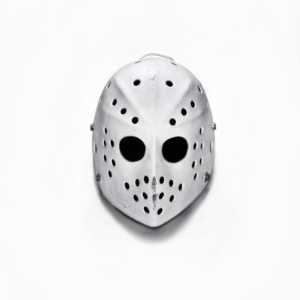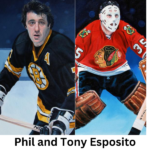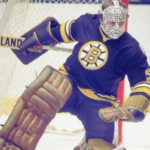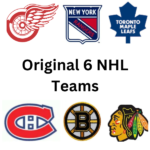The history of the NHL hockey goalie mask is a fascinating one. It’s hard to imagine a human wanting to stop hard rubber pucks without one. But they did. The evolution of the hockey mask spans several decades and features some of the most iconic players in the game. Here’s a brief overview of the evolution of the goalie mask, along with some notable players and stories.

Early Days (1920s-1950s)
In the early days of the NHL, goalies played without any protection for their face or head. This meant that they were often at risk of serious injury from flying pucks and sticks. The first player to wear any kind of facial protection was Jacques Plante of the Montreal Canadiens, who in 1959 donned a fiberglass mask that he had designed himself. His coach, Toe Blake, was initially resistant to the idea, but Plante persisted and eventually won him over. Plante’s mask was a simple, white design that covered his entire face, and it quickly became a sensation in the NHL.
The 1960s
In the 1960s, other goalies began to follow Plante’s lead and wear masks of their own. Some of the most notable players from this era include Terry Sawchuk, Gump Worsley, and Glenn Hall. Sawchuk was known for wearing a mask that covered only his eyes and nose, while Worsley favored a mask with a clear plastic shield that allowed him to see the puck more clearly. Hall, on the other hand, preferred to play without a mask altogether, relying instead on his lightning-fast reflexes to keep him safe. (Note: The lightning fast reflex approach doesn’t work as well as a mask.)
The 1970s
By the 1970s, the use of goalie masks had become standard in the NHL. Players such as Ken Dryden, Tony Esposito, and Bernie Parent all wore masks that were more advanced than those of their predecessors. Esposito, for example, wore a mask with a distinctive black and white design that became synonymous with his name. Parent’s mask, meanwhile, featured a bird-like design that was intended to intimidate his opponents. Check out the Gerry Cheever’s mask story here.
The 1980s and Beyond
In the 1980s, goalie masks continued to evolve, with players experimenting with new designs and materials. Ron Hextall, for example, wore a mask that was made out of Kevlar, a lightweight and durable material that was also used in bulletproof vests. Hextall’s mask was designed to be as lightweight as possible, allowing him to move more quickly and easily on the ice. Other notable goalies from this era include Patrick Roy, Martin Brodeur, and Dominik Hasek, all of whom helped to cement the mask as an essential part of the goalie’s equipment.
In conclusion, the NHL hockey goalie mask has come a long way since the early days of the sport. From Jacques Plante’s DIY fiberglass design to the high-tech masks of today’s players, the mask has become an indispensable part of the goalie’s arsenal. Along the way, many players have left their mark on the sport through their unique mask designs and memorable performances in the net.
Thanks for your time. Please leave comments and suggestions below.




